I building an application to display a connected graph, I found useful to make use of Vue.js for developing some functionalities.
For testing purpose, I tried to wrap up a simplest graph in a vue component, force directed layout, but the frame rate drops significantly (600 nodes in SVG, randomly connected each with 3 links => min FPS 2.4 max FPS ~9).
That is not acceptable for my scope.
My goal is to signal when user add/remove nodes to a vue component and backward, and in general signal an event on the graph to a vue component and backward.
Basically I want to keep the rendering of the graph in native code, for simplicity it would be ok to make use of the data structure and methods in a vue component. But I think I cannot do that, because vue would not find the corresponding UI.
Which approach should I use to communicate between the native coded graph and Vue components?
May I call directly internally the component, with smtg like vue.$data to make my graph react ?
Could you show a simple example to show how to access methods, props, events used internally in a vue component?
Below a little test (made use of Vivagraph library):
<template>
<div>
<div id='graphContainer' ref="graphContainer"></div>
</div>
</template>
<script>
export default {
data() {
return {
graph : Viva.Graph.graph(),
graphics : Viva.Graph.View.svgGraphics()
}
},
mounted() {
// create an array, will make use of it later
function range(start, stop, step) {
if (typeof stop == 'undefined') {
// one param defined
stop = start;
start = 0;
}
if (typeof step == 'undefined') {
step = 1;
}
if ((step > 0 && start >= stop) || (step < 0 && start <= stop)) {
return [];
}
var result = [];
for (var i = start; step > 0 ? i < stop : i > stop; i += step) {
result.push(i);
}
return result;
};
var randomNodes = range(600);
let v, u;
for (var i = randomNodes.length - 1; i >= 0; i--) {
v = randomNodes[i];
for (var j = range(3).length - 1; j >= 0; j--) {
u = randomNodes[Math.floor(Math.random() * randomNodes.length)];
this.graph.addLink(v, u);
}
this.graph.addNode(v);
}
this.renderer = Viva.Graph.View.renderer(this.graph, {
graphics : this.graphics,
container: this.$refs.graphContainer
});
this.renderer.run();
//test
window.graph = this.graph
}
}
</script>
<style lang="scss">
svg, #graphContainer {
width: 100%;
height: 100%;
}
</style>
